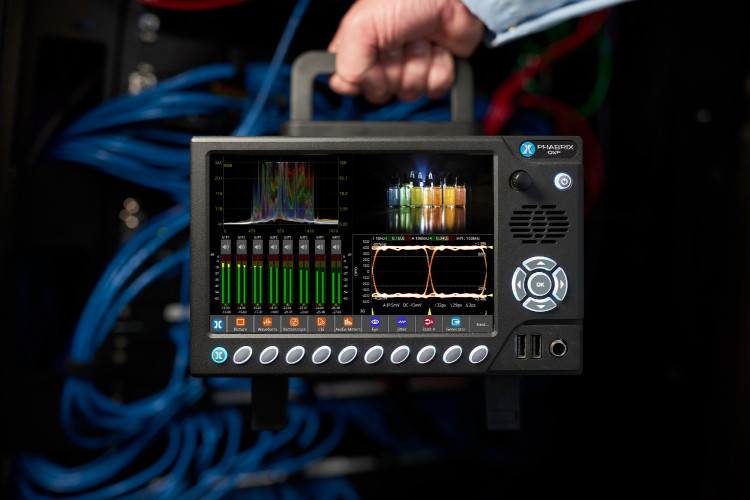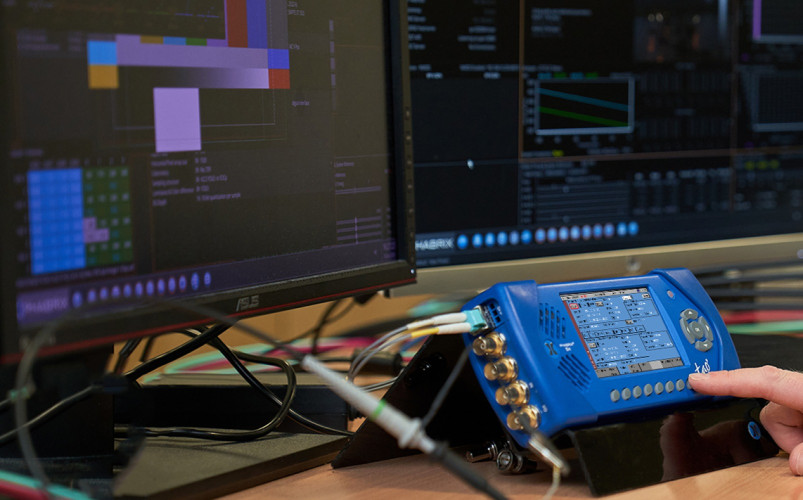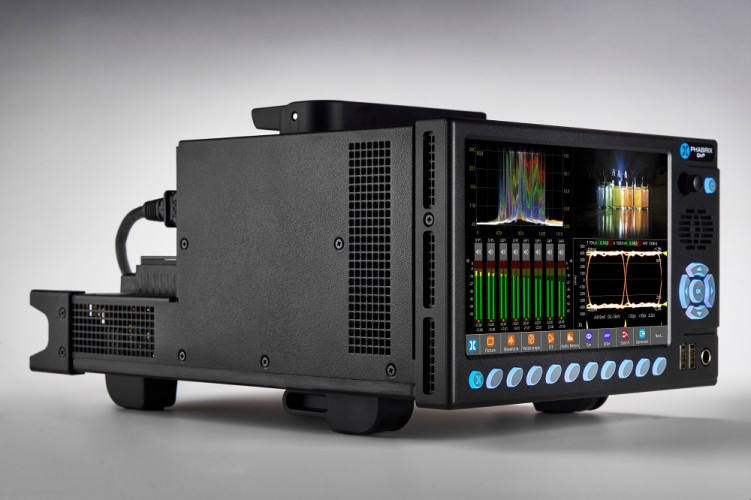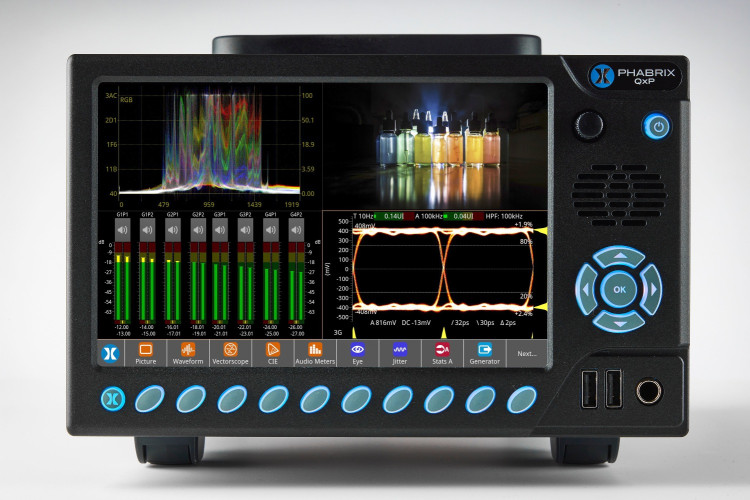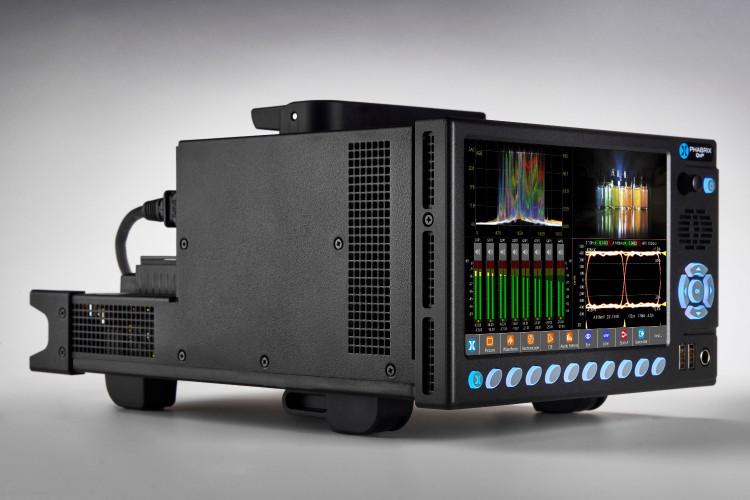PHABRIX storming ahead at NAB with eye and jitter
Author: Dennis Lennie
Published 1st June 2009
It is not often that a product is released that encapsulates so distinctly the essence of British ingenuity but the new SxE hand held test and measurement instrument with eye and jitter functionality from PHABRIX may just have set itself in that mould.
Having successfully launched the PHABRIX SxA, a three in one portable testing device at IBC2008, offering a combined generator, analyzer and monitor supporting three generations of SDI signals (3G-SDI, HD-SDI and SD-SDI), this UK based company demonstrated its 3G eye and jitter advancement on its stand at BVE2009 in February and now plans to launch the PHABRIX SxE officially at NAB2009 in April.
Phillip Adams, PHABRIX’s owner and managing director commented,
“Eye and jitter measurement at 3Gbps is seen by many as the ‘Holy Grail’ of SDI interface testing, and the challenges of designing such functionality into a product, let alone a hand held one, are considerable. From the outset we set ourselves the task of creating a product which would not only address the needs of the industry to be compliant with SMPTE specifications but which would also offer the analysis tools required to determine the possible sources of non-compliance.
“One of the most significant challenges was the need to ensure low power consumption and to achieve this we had to go back to fundamental design principles. Space too was a factor and of course keeping the cost down was also essential. In the whole design we have tried to leverage mobile technologies - the processor, battery and power management circuits. Like all good innovators we have incorporated leading edge technology from other industries.
“In pure engineering terms the challenge required an eye sampling system with an analogue input bandwidth in excess of 7.5 GHz. The fundamental frequency of a 3Gbps signal is 1.5 GHz and to accurately represent that signal you need at least a third harmonic and preferably a fifth. Imagine the cost of an oscilloscope with this kind of input bandwidth and you can begin to understand the challenge.
“Another major challenge was to create a sampling clock with extremely low jitter, the creation of which is also pushing technological boundaries. At 3Gbps we have just 337 picoseconds across the eye which must be sampled with a clock with significantly better than 33 picoseconds peak to peak jitter.”
The PHABRIX SxE is available in a standard form with tools focussed on confirming compliance to SMPTE specifications. A single screen displays an eye diagram and jitter thermometers providing the engineer with a quick go/no-go indication and is intended as a fast, portable device for engineers. Applications include OB trucks, transmission stations through to large broadcast installations.
The analysis option for the PHABRIX SxE adds an additional jitter screen plus enhancements to the eye display and is focussed toward broadcast manufacturers who have a need for high end analysis tools at an affordable price. Here the PHABRIX SxE uses hardware and software algorithms usually associated with very expensive bench-bound equipment.
Histograms give statistical information which can be used to accurately measure rise time, fall time and amplitude. These automatic accurate measurements can then be logged for extended periods of time. Measurements like rise time and fall time are notoriously difficult to make with SDI signals and here the PHABRIX SxE excels, providing user friendly automatic measurements even in the presence of excessive jitter.
In addition to the standard timing and alignment jitter filters, decade filters are provided allowing an engineer to analyse the frequency content of any jitter present. The number of eyes displayed is adjustable from one eye up to one frame of eyes – a very useful feature for detecting source related power supply problems.
Multiple eye selection also enables analysis when serialiser jitter is present: Products process video in either a 10 or 20 bit parallel data domain which is subsequently transmitted as a single bit serial data stream. By triggering every 10 or 20 eyes you can reveal repetitive parallel clock domain jitter in equipment being analysed.
The separate jitter analysis screen incorporated into the advanced option enables the engineer to analyse the nature of jitter present using a graph of jitter versus time. Again, the decade filters are present and the time base can be adjusted from 1 line through to 1 frame. By analysing jitter in this detailed way an engineer can determine if a signal is in or out of specification and also get a feel for where any problems lie. A spiky waveform could indicate power supply noise and these visual clues aid the diagnosis. Vertical gain and horizontal magnify controls are provided to help further identify problems.
Paul Nicholls, PHABRIX’s sales and marketing manager added,
“With all the generation, analysis and monitoring tools of the highly successful SxA, the PHABRIX SxE with eye and jitter is set to create quite an entrance at NAB2009. Many thought a portable device showing eye and jitter measurements at 3G was impossible. It is a credit to our development team that this product is a dream to use and the price will appeal to everyone looking closely at their budget spend . We hope to see you at NAB”









